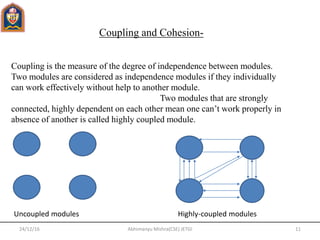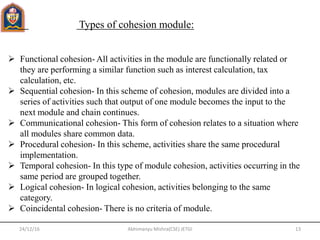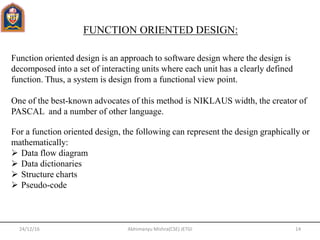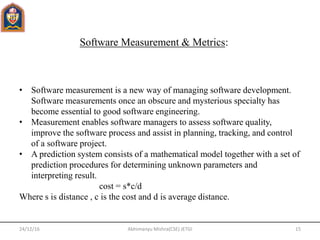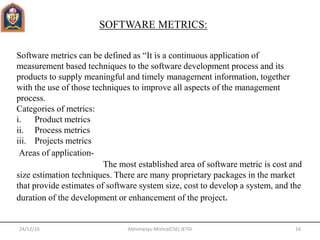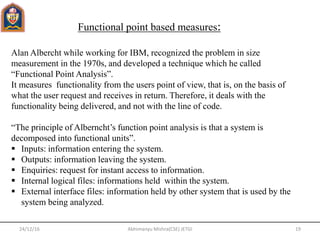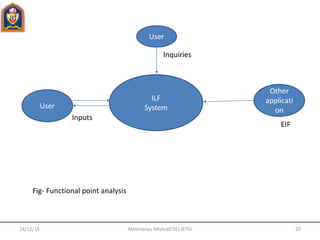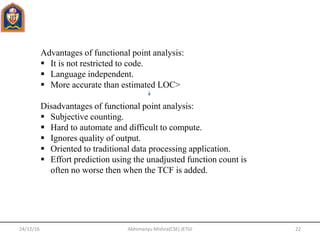This document discusses various software engineering concepts related to software design. It begins by outlining basic design principles and the software design process, which involves three levels: interface design, architectural design, and detailed design. It then covers topics like modularization, coupling and cohesion, function-oriented design using tools like data flow diagrams and structure charts, software measurement and metrics including function point analysis and cyclomatic complexity, and concludes with Halstead's software science for measuring program length and volume.
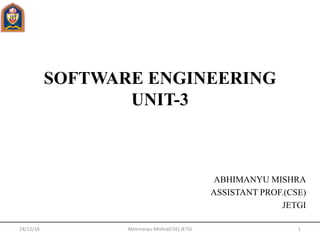
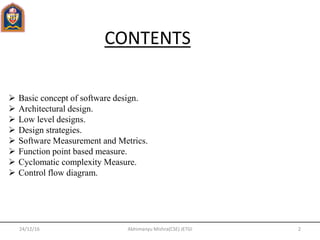

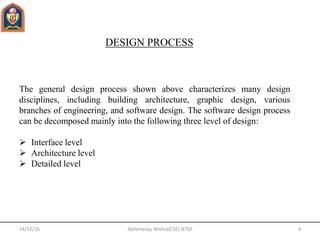


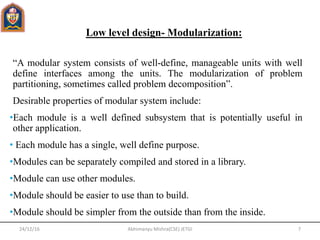
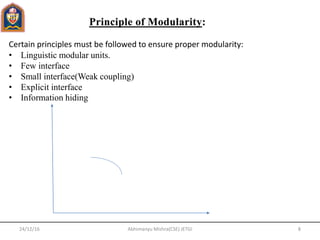
![Structural Chart
24/12/16 9Abhimanyu Mishra(CSE) JETGI
For a function oriented design, the design can be represented graphically, by structural
charts. The structure of a program is made up of the modules of that program together
with the interconnections between modules.
As an example consider the structure of the following program, whose structure is:
Main()
{
int sum, n N, a[MAX],j;
Readnums (a,&N);
Sort(a ,N);
Scanf (&n);
Sum= Add_n (a,n);
printf(Sum);
}
Readnums (a,N)
int a[], *N;
{
}](https://image.slidesharecdn.com/seunit3-161231043050/85/Software-Engineering-unit-3-9-320.jpg)

